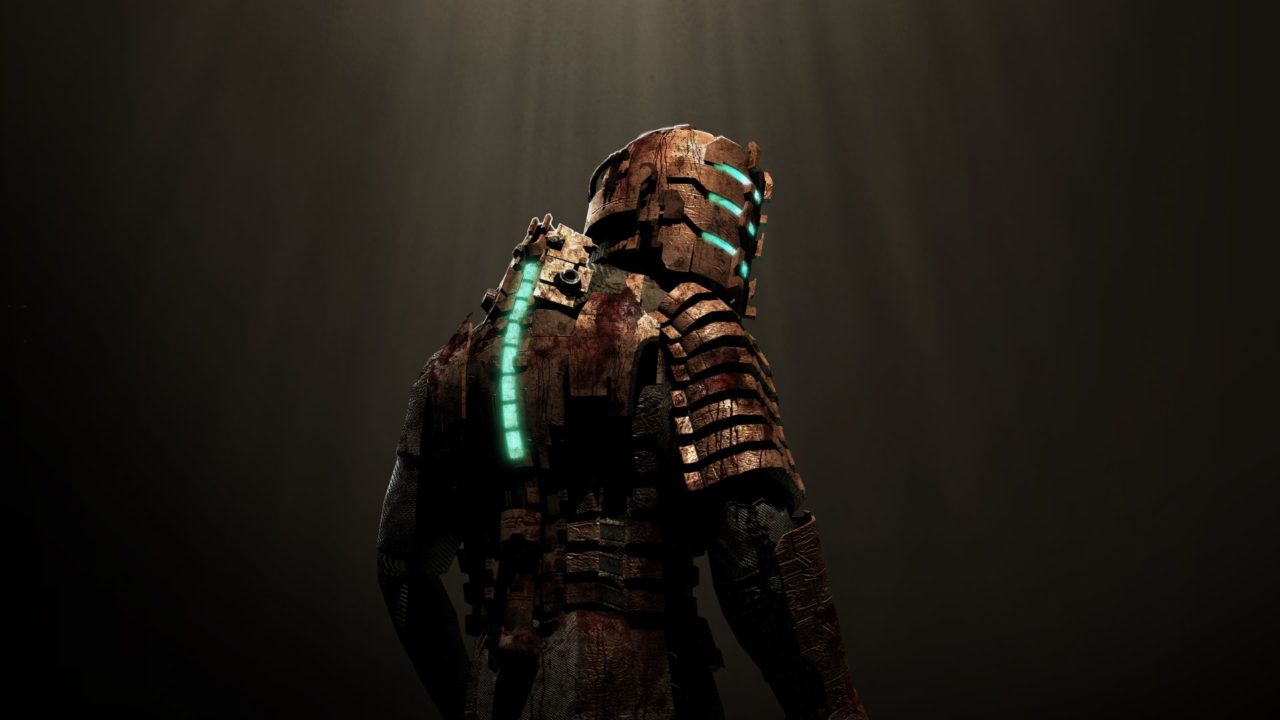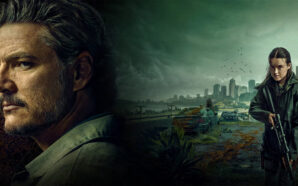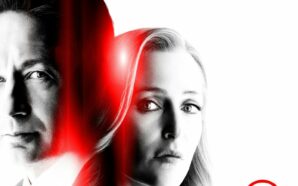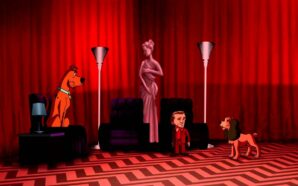On this day, a decade ago, Dead Space was released. On one hand that feels correct, especially when looking at the advancements in technology and games released since, but there’s something about Dead Space that has kept the game in my mind for all these years, festering and gnawing at me. Whenever I glance at my shelf of video games my eyes instantly lock onto the case of my PS3 version of the game, despite not having that console to play it on anymore, before continuing on to see what disc I should put in. If I’m enjoying a game for the first time some uncontrollable voice mutters “Yeah, but it’s not Dead Space”. The legacy of the game haunts me and the word gaming and that title, as well as a couple of other games from that time like Assassin’s Creed II, are almost synonymous. They made me the gamer I am today, responsible for my tastes and choices ever since. However, the fact is that I hadn’t played Dead Space in a couple of years, but when I saw that its tenth anniversary was fast approaching I had to rectify that. So, I bought the backwards-compatible version on my Xbox One and settled in for the first time in years, scared to discover if my memories had betrayed me and if nostalgia, that most delicate but potent thing, was all I would find lurking in the shadows of the USG Ishimura.
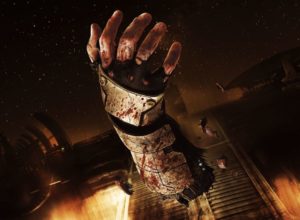 For a game that’s now ten years old, Dead Space looks incredible. I was truly shocked at the incredible sight of the USG Kellion coming out of Dead Space’s answer to hyperspace and having the USG Ishimura, a planet-cracker starship, lie dormant out of the viewscreen, with a ripped apart planet as the backdrop. Sure, some facial models and the odd texture have undeniably aged but for the most part it’s still a great looking game. Although I am curious to see how different the old PS3 version I used to play compares to playing it on a current-generation console on a 4K TV. I think the answer to why it still looks so good is the amazing lighting system. Whoever was in charge of that is the Roger Deakins of video games and the great lighting becomes more apparent later in the game when we return to locations we’ve visited previously but they look totally different, now lit by creepy candle light instead of flickering strip lighting and cracked monitors. Bathing everything in shadow in a game is a sure-fire way to hide graphical inadequacies but for a horror game that’s merely a secondary effect with the creation of atmosphere being the primary.
For a game that’s now ten years old, Dead Space looks incredible. I was truly shocked at the incredible sight of the USG Kellion coming out of Dead Space’s answer to hyperspace and having the USG Ishimura, a planet-cracker starship, lie dormant out of the viewscreen, with a ripped apart planet as the backdrop. Sure, some facial models and the odd texture have undeniably aged but for the most part it’s still a great looking game. Although I am curious to see how different the old PS3 version I used to play compares to playing it on a current-generation console on a 4K TV. I think the answer to why it still looks so good is the amazing lighting system. Whoever was in charge of that is the Roger Deakins of video games and the great lighting becomes more apparent later in the game when we return to locations we’ve visited previously but they look totally different, now lit by creepy candle light instead of flickering strip lighting and cracked monitors. Bathing everything in shadow in a game is a sure-fire way to hide graphical inadequacies but for a horror game that’s merely a secondary effect with the creation of atmosphere being the primary.
And today Dead Space still maintains an unyielding sense of atmosphere. The lighting and casting of shadows is just part of what makes up the incredible whole. There’s just the right amount of blood-stained upholstery and random body parts in every corridor making the massacre aboard seem disturbingly realistic despite its out-of-this-world origins and location. The sound design might be the true gem of the game with every chime of an objective completed, muted blast of gunfire in a vacuum, hiss of pressurisation and squelch of stepping on decomposing body parts being perfect. This goes a long way towards making Dead Space still scary to this day. I’ve played through the game countless times and remember every twist and turn in the maze-like ship, every vent an enemy is about to jump of and precisely how many are in each section, but the scuttling of some unseen Necromorph in a nearby airduct still made my skin crawl. There’re no cheap jump scares but instead a constant and palpable sense of terror. Even with multiple weapons, the knowledge that I can easily defeat any threat that’s around the next bend and the memory of exactly what’s waiting for me, I was still scared to turn each and every corner. That’s the power of Dead Space and it’s as strong today as it was ten years ago.
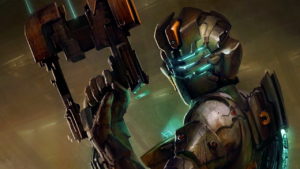 The most surprising thing from my recent playthrough was that the game makes me like two things I normally really don’t like in modern games; the first being the silent protagonist. We play as Isaac Clarke, an engineer sent to the USG Ishimura after contact is lost with the vessel due to a contagion that mutates people into monstrous Necromorphs. I’m often of the opinion that games should tell me a good story rather than using annoying tactics like silent protagonists to make me a part of the story and become more invested that way. But Dead Space makes me rethink that stance. While Isaac is a character playing a role in a story personal to him, his silence works. There’s something even more isolating and terrifying when playing as a character who can’t talk. There’s no chance of reasoning with any of the game’s villains, human or otherwise, when your protagonist can only let out the occasional grunt of exhaustion or pain. One thing I really like about Isaac is that he’s very much an engineer and not a soldier. This translates well to the gameplay where most of the weapons available are makeshift tools like the saw and the now iconic plasma cutter which are used to take down the many different types of Necromorph. The game also forces you to relearn everything you know about shooting in video games; the targets now being joints and limbs rather than the head to take advantage of the game’s unique “strategic dismemberment” function.
The most surprising thing from my recent playthrough was that the game makes me like two things I normally really don’t like in modern games; the first being the silent protagonist. We play as Isaac Clarke, an engineer sent to the USG Ishimura after contact is lost with the vessel due to a contagion that mutates people into monstrous Necromorphs. I’m often of the opinion that games should tell me a good story rather than using annoying tactics like silent protagonists to make me a part of the story and become more invested that way. But Dead Space makes me rethink that stance. While Isaac is a character playing a role in a story personal to him, his silence works. There’s something even more isolating and terrifying when playing as a character who can’t talk. There’s no chance of reasoning with any of the game’s villains, human or otherwise, when your protagonist can only let out the occasional grunt of exhaustion or pain. One thing I really like about Isaac is that he’s very much an engineer and not a soldier. This translates well to the gameplay where most of the weapons available are makeshift tools like the saw and the now iconic plasma cutter which are used to take down the many different types of Necromorph. The game also forces you to relearn everything you know about shooting in video games; the targets now being joints and limbs rather than the head to take advantage of the game’s unique “strategic dismemberment” function.
The other modern video game idea that I usually despise is the removal of a Heads-Up Display. The general trend of doing away with the HUD is to make games more immersive experiences but I think ease of use is the thing that makes games the most immersive. Splinter Cell is a great example of this because in Chaos Theory there was both a light and sound meter to help you be super stealthy but then they quickly got rid of that in subsequent games to make it more immersive but the opposite happened: I was brought out of the game because I was angry for being spotted because I couldn’t tell how much noise I was making or if I was in a dark enough shadow. But Dead Space’s lack of HUD does indeed make the game more immersive. It’s a stroke of genius putting Isaac’s health and stasis bars on his back, not to mention iconic, with the game’s RIG system. It’s a HUD that has an explanation in-world that gives the player all the information they need and looks damn cool while doing so.
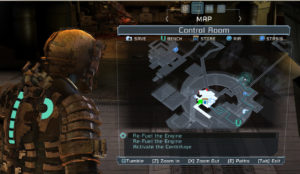 This is all not to say I didn’t find any issues with the game on the recent revisit but, as you can probably tell by the small size of this paragraph, there aren’t many. The revolving map that’s part of the RIG system is clumsy to control, hard to navigate and difficult to relate to your actual surroundings. Isaac has a ridiculously powerful stomp attack that plays into the bizarre video game logic that stamping on dead bodies gives you ammunition. If you’re running for your life with several enemies chasing you, you can simply find the nearest door and when it closes behind you you’re safe which does take the tension out of some scary situations. And finally, I can confirm that the sequence that sees you shooting and destroying asteroids that are about to hit the ship still sucks. Even on an easy difficultly it still takes many, many tries to complete successfully.
This is all not to say I didn’t find any issues with the game on the recent revisit but, as you can probably tell by the small size of this paragraph, there aren’t many. The revolving map that’s part of the RIG system is clumsy to control, hard to navigate and difficult to relate to your actual surroundings. Isaac has a ridiculously powerful stomp attack that plays into the bizarre video game logic that stamping on dead bodies gives you ammunition. If you’re running for your life with several enemies chasing you, you can simply find the nearest door and when it closes behind you you’re safe which does take the tension out of some scary situations. And finally, I can confirm that the sequence that sees you shooting and destroying asteroids that are about to hit the ship still sucks. Even on an easy difficultly it still takes many, many tries to complete successfully.
Looking back, I think it’s the game’s simplicity that made it great then and why it continues to be great now. Dead Space 3 is credited with destroying the franchise and I largely agree with that, it’s focus on action was undeniably a mistake, but for me the series steadily decreased with every release after the first and recently replaying it has cemented that fact for me. Despite my love for the first game I never truly enjoyed the sequel. Sure, it was mainly more of the same but the expansion of the universe goes against why I love the first game. Dead Space is a cramped, claustrophobic horror shooter set in an isolated ship in the far reaches of space, taking inspiration from Alien, John Carpenter’s The Thing and Event Horizon. That isolation is vital to Dead Space. There can be hints to the wider universe and intriguing backstory but for the most part it needs to be moment-to-moment and oppressive in its storytelling. Straight after the release of the first game, the franchise was burnt out on tie-in novels and animated films with the lore expanding to galactic proportions and my head hurts just from reading the Wiki to try and understand everything. To a lesser extent I had the same issues with the Arkham games. Batman’s mythology is huge and while I really like Arkham City, Origins and Knight, they still can’t compare to that first game set entirely in Arkham Asylum. It’s personal preference, sure, I just think Dead Space works better with boundaries and restrictions.
Now that’s to say I don’t want the Dead Space series to continue. I would absolutely love another game in the series but I want it to be a back-to-basics claustrophobic thriller rather than continue on as a large-scale space opera. It could either be a complete reboot or a detached sequel, called “Dead Space: Awakening” or some such thing, that adds to the lore but minimally. I am intrigued by some of the canon of the franchise; it’d be interesting to see a prequel focused on Robert Altman but it’d have to tie-in to the lore rather than be dominated by it. Who would make it? I don’t know. Visceral Games, known as EA Redwood Shores at the time of the first Dead Space, has been shut down by EA after their Star Wars title was cancelled. I’m still mad about that! But EA is a big company and surely they have a studio that would love to breathe new life into the Dead Space franchise.
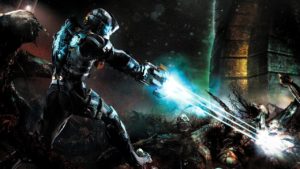 Last year I wrote in depth about my hopes for a new Dead Space (you can read the full article here) and within I imagined what a reveal teaser for a new Dead Space could look like. Here’s that segment of the article: Start with a dark and vaguely industrial hallway, flashing lights hanging by torn cables from the ceiling, distant bangs and incomprehensible screams from off-camera, upholstery drenched in blood, you know the score. From an over-the-shoulder view of the lead character, who is bathed in shadow, we see glimpses of a horrific creature. Then the lead character’s instantly recognisable RIG suit lights up as the audience erupts into applause at the recognition of the series’ signature image. The Necromorph is dispatched with a plasma cutter, limb by limb, and the Dead Space title fills the screen to even more thunderous applause. Pretty cool, huh?
Last year I wrote in depth about my hopes for a new Dead Space (you can read the full article here) and within I imagined what a reveal teaser for a new Dead Space could look like. Here’s that segment of the article: Start with a dark and vaguely industrial hallway, flashing lights hanging by torn cables from the ceiling, distant bangs and incomprehensible screams from off-camera, upholstery drenched in blood, you know the score. From an over-the-shoulder view of the lead character, who is bathed in shadow, we see glimpses of a horrific creature. Then the lead character’s instantly recognisable RIG suit lights up as the audience erupts into applause at the recognition of the series’ signature image. The Necromorph is dispatched with a plasma cutter, limb by limb, and the Dead Space title fills the screen to even more thunderous applause. Pretty cool, huh?
A new Dead Space might seem like a pipe dream but the original still looks and plays great ten years after its release and replaying it has cemented its place in my upper gaming echelon. It’s as good as I remember it being, even if I can now turn a more analytical eye on the experience than I could when I first played it. The game contains nostalgia and the memories of past playthroughs are kind but the game holds up and remains one of my favourites of all time; replaying it was the right thing to do and didn’t ruin it in the slightest. In fact, I think its ability to remain an incredible experience ten years on makes it even better. Now that this article is all wrapped up I think I might just start another playthrough and I’m sure it won’t be my last.
Have you revisited Dead Space recently and how do you think it holds up after a decade? Let me know in the comments and geek out with me about TV, movies and video-games on Twitter @kylebrrtt.




